|
Tennessee Williams’ Small Craft Warnings takes the small stage of the Off the Wall Theatre in a tight, little production directed by Dale Gutzman. Set in a seedy coastal bar in Southern California in the early 1970s, the show features a psychologically misshapen group of people struggling to get by in the murky storm of human existence. Gutzman brings together a solidly entertaining cast. Climb into the tiny theatre for the show and hang out with a few people you’d be glad not to know outside of a bar in 1972. The bar itself is okay. Looks real presentable. The type of tiny dive that doesn’t have anything on tap. It’s got a jukebox and a couple of beer lights. Everybody there seems kind of close to each other, but that’s just proximity. To a certain extent everyone there would prefer to be alone. It’s true: if there was more of a desire to be together, there’d be more of a central plot arc about the show. Instead there’s a bunch of internal monologues bled out into the ether of a dark drama. Robert Hirschi plays a flawed man behind the bar. His name is Monk. It’s his place. He lives upstairs. There’s a defeated shuffle about him. Hirschi say sas much with his downcast gaze as he does with any bit of dialogue. Michael Pocaro plays the fallen physician everyone knows as Doc. Maybe he’s every bit as good as he’s ever been or maybe he’s just really good at coming up with the right lies. Pocaro masters the delicate balance of verbally articulate drunkenness to keep the character interesting even when he isn’t saying anything. Jenny Kosek plays Violet...a young drifter who lives above an amusement hall. There’s a zombielike beauty about the character that occasionally manages to animate into genuine warmth. Kosek has a tremendous amount of patience in the role. A lesser actor would have tried to pry more evidence of life into the role. Life has been and gone in Violet. Kosek’s a restless ghost in the role. It’s quite haunting. If Kosek’s playing a ghost, Max Williamson is playing a cheap trailer park vampire named Bill. Williamson etches a little bit of charisma into a guy who never worked a day in his life...a guy who drifts from one relationship to the next. He’s at the end of one looking for his next while sipping on a beer. Bill’s current willing victim is a woman named Leona played by Marilyn White. White does a good job of conjuring the maternal end of a nomadic woman who has taken pity on Bill and everyone else at a bar. Maybe she’s doing it to help people out or maybe she’s just doing it so that she can find people to feel better than. There’s a bitterness in her as well. Nathan Danzer plays Steve--a genuinely nice person who has been forced into the margins of society. Danzer is dopy and likable in a performance that contrasts well against the rest of the ensemble. James Strange is a formidable figure as Quentin: a nihilist who is new to the bar. He’s just in for a drink. He’s...not exactly surprised to see a kid. named Bobby has followed him there. Jake Russell plays Bobby as a traveling explorer. Russell has a charismatic momentum about him in the role of someone in who runs the risk of ending up where Steve is given the wrong luck. It’s two hours at a bar. A few people take turns gathering each other’s attention. Occasionally there’s an altercation. Gutzman and company juggle the chaos onstage when it arrives to punctuate on otherwise slow, moody drama from the early 1970s. Off the Wall’s production of Small Craft Warnings runs through March 3rd at Off the Wall’s space on 127 E. Wells St. For ticket. reservations and more, call 262-509-0945 or visit Off the Wall Theatre online.
1 Comment
In the course of a lifetime, a person can collect quite a few contradictions. Over time these contradictions begin to look like psychoses to the outside world. Perhaps true madness is just a matter of living long enough. In Tandem Theatre explores a little bit of this in Eric Coble’s two-person drama The Velocity of Autumn. In Tandems intimate stage plays host to a man and his aging mother. She’s barricaded herself in her home. He’s gone out of his way to try to see her. If he can’t talk some sense into her, his siblings are going to call the police. He’s only got a limited amount of time in a taut psychological drama that runs the course of less than 90 minutes without intermission. Angela Iannone plays Alexandra. She’s determined that she will die in her home...even if that means causing her own destruction. (The play takes place in a room filled with jars of highly flammable liquid which could be weaponized at any moment.) Iannone manages the delicate line between hostility and insanity with the kind of careful poise one would expect from the actress. She carries great precision throughout the drama. The feels a bit out of place where the character begins to realize that her memories aren’t entirely intact. Iannone’s precision lends Alexandra a deft mastery over her own fading memories that makes for an interesting performance. Steven Marzolf makes his entrance by climbing through a window. (He’s playing her son--a character who knows enough to know that the one window she wouldn’t lock would be the one next to her favorite tree.) Marzolf balances concern and love against anger and frustration in the role of a son confronting his mother regarding a breakdown that could well become fatal. In his interaction with her, it is revealed that there’s an artistic iconoclasm which is complicating matters. He may be as interested to know why she has taken down all of her paintings as he is about all of the jars of film developing fluid that line the room. Chris Flieller directs the show with careful attention to the unique 2/3 semi-thrust stage at the 10th Street Theatre. As gripping as. a conversation between two characters can be, it can all feel pretty flat without the direction that feels both emotionally authentic and dynamic. The delicate nuances of this can be particularly difficult in a show that balances between familial love, malice and madness. Having worked in the space for a number of years, Flieller knows what works best with the space and runs with it. It’s kind of easy to overlook in a theatre market with as many small stages as Milwaukee, but it’s always so fascinating to see a show on a small stage that’s directed by someone with an intimate understanding of every angle having worked in and developed the space over many years. Steve Barnes does a really good job on scenic design. A single-location two-person drama gives an audience plenty of time to look around. The challenge here was to develop a set that looks clean, lived-in AND beset with the onset of madness. Alexandra has only started the process of living in total isolation, but Barnes throws-in enough details that suggest a relatively stable past that’s beginning to become cluttered with hostility. The world outside the window feels bright and bustling thanks to clever work by lighting designer Holly Blomquist and Jonathon Leubner’s atmospheric soundscape of a very active New York that Alexandra could so easily interact with if only she’d open the door. In Tandem Theatre’s production of The Velocity of Autumn runs through March 17th at the Tenth Street Theatre on 628 N. 10th St. For ticket reservations, call 414-271-1371 or visit In Tandem online. A staged reading in a studio theatre of an established script can be an interesting opportunity to strip everything down to the purest essence of theatre. With all the actors in proximity and a little to distract from voices and faces and person-to-person connections, the personal dynamics between individual characters become strikingly vivid. Actors deliver dialogue behind music stands with very little atmospheric embellishment. People, personalities and personal interactions are handed the tension of the audience’s full attention. David Lindsey-Abaire’s acclaimed drama Rabbit Hole gains a great deal from a staged reading format. This weekend the Sunset Playhouse delves into an intimate reading of the script. Director Donna Daniels has conscientiously aimed the entire staging at the actors and the characters they play. Ruth Arnell is stunningly nuanced as Becca: the mother of a boy who was tragically killed in an auto accident. Arnell has got great sensitivity to complex intricacies of emotion. Arnell coaxes subtle characterization into the corners of her delivery of very intricately-written dialogue. There are quite a few reasons for me to take the journey to Elm Grove to see this show. Arnell's presence here is one of the more engaging reasons to do so. Nicholas Callan Haubner is a relatively steady figure as her husband. His somewhat monolithic stage presence lends impressive gravity to the personality of someone who cannot afford to move on the from the loss of his son. Haubner is stern, bold and unmoving in contrast to Arnell’s restless discomfort with phantoms from the past. Haubner and Arnell have a strong connection at the center of the drama around which everything else seems to orbit. Victoria Hudziak constructs a pleasantly out-of-focus energy for Becca’s scattered sister Izzy, who has recently become pregnant. Relationships between Becca and her mother are further defined in Izzy’s presence. Hudziak thoughtfully plays the muted depth of a character who might not be living up to her full potential...someone every bit as flawed as the rest of the cast and the rest of humanity. Joyce Sponcia is charming as Becca and Izzy’s mother. She’s a woman lost in her own memories who surfaces for long enough to have a couple of truly honest moments with Becca. Sponica provides Arnell with just the right mixture of concern and loving antagonism to bring across a couple of sharp moments onstage. Fresh faced Joey Chelius plays the high school kid who was tragically driving the car the killed the son of Becca and her husband. He’s hoping to make some sense of the guilt and bewilderment he’s going to be carrying with him for the rest of his life. Sunset Playhouse’s staging of Rabbit Hole runs one weekend only. There are three performances left: 8:00 pm tonight (the 22nd) 8:00 pm on Saturday (the 23rd) and 3:00 pm on the Sunday the 24th. For ticket reservations and more, visit Sunset Playhouse online. Cabaret. Milwaukee swings into the final chapter of its Jealous Revolver serial. The bar at the Astor Hotel once again serves as the perfect venue for a retro variety show done in the style of an old live radio show. Chris Goode brings a distinctive (And distinctively energetic) old-timey radio voice to the stage as show’s host Richard Howling. This time around Howling introduces a very evenly-mixed evening of entertainment with the final chapter of the original Milwaukee-based crime thriller starring a suitably dramatic Dora Diamond and Maura Atwood as business partners who have taken over a speakeasy in the wake of a few homicides in earlier episodes. The tradition with old-style crime drama (going all the way back to the original old radio shows) is to over-play the dramatic intensity. To their credit Diamond and Atwood keep the energy of the drama on a very believable range that makes for an engaging tension not often seen in gangster thrillers. Randall T. Anderson makes a striking appearance as the sinister visiting villain from Chicago--a gangster who plays a man known as Happy Memories. The cast is rounded-out by a dashing Andrew Parchman as a police detective and a comically inept cop played by Michael Keiley. The show is separated into two halves...each opened by the classy crooning of Cameron Webb, who does a hell of a job with a Billie Holiday tune. Cabaret Milwaukee newcomer Anna Brink is a classy addition to the show. Her agile piano work throughout the show provides a jazzy background for the show that fits in perfectly around the edges of all the rest of the action. (She's appeared various place over the years. It's fun to see her add to the dynamic of a theatrical show.) Allen Russell adds to the atmosphere with period-perfect violin that lingers around the edges with Brink’s piano. Michelle White sharply shifts to comedy this time around. She’d been delivering some of the drama in earlier episodes. Here she’s filling-in for comic 1940s "helpful hints" housewife Laura Holterman in a bit of clever retro comedy based on an actual 1939 “Marital Rating Scale” by one Dr. George W. Crane that appears in the program. Elsewhere, White joins Lindsay Willicombe and Marina Dove as the three-part harmony of the Howling Jinglers, who also engage in a bit of fun comedy between the music. Michael Palisano reappears as the slyly alliterative comedian in a particularly deft tongue tangle tango with witty anxiety. In one of the more clever bits of staging in the show, tap dancer Danielle Joy Webber performs her second set onstage with the corpse of a murder victim still onstage as a tied-up police office Micheal Keiley serves as captive audience. Elsewhere in the story, dance comes in an altogether different form as Maria Pretzl and Jullian Williams perform a burlesque for the cops. So to review: Burlesque, tap, vaudevillian stand-up, jazz crooning with keyboard and violin, drama and suspense. It's a classy time at the Astor. Cabaret Milwaukee’s The Jealous Revolver: Episode Three runs through March 2nd at the Astor Hotel on 924 E. Juneau. For ticket reservations and more, visit Brown Paper Tickets online. Theatre Gigante’s adaptation of Enemy of the People covers a tremendous amount of ground in allegory. Isabelle Kralj has put together a really tightly-focused, little ensemble for their adaptation of Ibsen’s classic. At the center of it all is a doctor played by Emmitt Morgans. Morgans’ journey as the doctor is a fascinating one that takes him from being a simple consultant with an idea to being something far better and then...far worse in the eyes of the people. At the opening of the story, Morgans is consulting with the mayor of a small town (played with seedy, duplicitous officiousness by David Flores.) The mayor suggests using a local water source to bottle natural spring water, but Morgans suggests something much more substantial: a health spa which could promote a tourist economy in the town. The mayor approves and the musical proceeds. At this stage, Morgans could have been playing a minor, supporting character--just a casual guy with an idea that happens launch the plot on its course. As plans for the spa develop, the doctor suggests drawing water for the spa from a pure place that turns out to be cost prohibitive to the mayor, who has the final say. Lacking any real power, the doctor must relent to the wishes of the mayor. Here Morgans is still playing someone who could have theoretically ended-up as a minor character in a much larger plot. The spa opens and everyone is celebrating. Somewhere in the background in and amidst it all, Morgans stands a a counter regarding a few test tubes. Having done some rather official-looking sciencey-stuff in the background, he addresses the people of the town (represented by a very energetic ensemble.) Sadly, the water is being drawn from a toxic source and the entire spa may have to be shut down for quite some time in order to protect people. Here Morgans is playing the doctor as a hero everyone respects. Things get complicated from there. The doctor’s fortunes reverse when he brings the health hazard to the attention of Flores’ corrupt mayor. Morgans cleverly treads the path of a man who shifts from some minor character in the background to prominence as a hero, then an activist and a vilified scapegoat for the bad decisions of others. Kralj has framed the journey of the hero with remarkable complexity for a tiny allegorical musical. What starts-off as a desire to help others shifts into a self-defining journey as well. And though the doctor is not without his own arrogance, the negative side of the character is a slight shadow around the edges of someone who really IS extremely selfless and willing to sacrifice himself for the benefit of the public. Morgans brings clever nuance to a role that could have easily played as more of a gleaming heroic altruist. He’s aided at a crucial moment by a cleverly-written Jason Powell song. The doctor is consulting with the people about the dangers of environmental hazards of the spa. They are grateful for his interest in the public health, happily praising him as a hero. In the course of the song, Morgans is allowed brief flashes of pride which grow into open acceptance of the hero label even as he shies away from it. It’s a tricky balancing act to portray a character tacitly accepting adulation that he is openly shying away from. More than simply showing subtlety, Morgans allows the moment to be a major turning point in the personality of the character without making it overwhelmingly obvious that he is doing so. The doctor’s rise to prominence casts a shadow over everything that he does from that moment on. Powell gives Morgans just enough space to play to a few different angles of heroism in remarkably clever moment in a provocative look at the politics of survival in an increasingly complex world. Theatre Gigante’s Enemy of the People runs through Feb. 16 at Kenilworth 508 Theatre on 1925 East Kenilworth Place. For ticket reservations and more, visit Theatre Gigante online. A more complete and concise review of the show runs in this week's Shepherd-Express. Cooperative Performance’s Allusion/Illusion is an intellectually exhilarating 45 minutes of experimental theatre. Like anything that’s truly experimental, it is many different things in many different ways. For 45 minutes the tiny, little improvised space in the Third Ward just down the street and around the corner from the Milwaukee Public Market becomes a fun existential playground cast in the emptiness of a vacant warehouse with vast expanses of plaster and Cream City brick. On one level, Allusion/Illusion feels oddly like a video game. Emily Elliot and Caitlyn Nettesheim are enjoyably confrontational as a pair of abstract entities in conflict who are debating whether or not to reveal the artifice of reality to the audience. There are multiple levels that the audience is ushered through in the course of the show as Allusion and Illusion guide us through the central question of morality in reality versus perception. The conflict progresses as curtains are raised, each one revealing another performance at a different level. Each level ends in a kind of climax, building on the levels before it. On another level, Allusion/Illusion is a simple intellectual funhouse. The show is introduced by a lovable blue fuzzy puppet named Little Blue who is brought to life by Billy Ray Olsen. Olsen delivers the character of Little Blue to the performance in a casually friendly tone. There's little done to separate puppet from the puppeteer. Olsen changes his voice very little for the character, appearing in plain view right behind him. Little Blue even makes reference to the guy standing behind him. It’s a really sharp introduction to the show. Much like everything else in the show he’s introducing, Little Blue can be taken for face value as a character...or as a puppet...or as an abstract symbol for something else entirely. It’s all so deeply open to interpretation. On another level, Allusion/Illusion is a variety show. There’s drama. There’s music. Jo Kerner from the prog rock band Rocket Paloma sings and plays guitar beautifully amidst the strange abstraction of it all. There’s dance and drama and shadow puppetry. (Here the show is being playfully literal. We see Plato’s Allegory of the Cave rendered in actual shadow puppets on the cavernous wall of an empty warehouse.) There’s multimedia mutation as well. One of the better moments in the entire show has Kerner’s face as a visage of inner turmoil broadcast onto the body of Raja Zafar. It’s weird. It’s disjointed. And it’s all in the service of subjectivity in reality. On another level still, Allusion/Illusion is an abstract existential fairytale. Emily Elliot is Allusion...a gritty, aggressive de-constructivist trying to guide the audience through artifice into something more real even though she knows that there isn’t anything beyond it. She’s a compelling nihilist in a tie and a black leather jacket. She’s contrasted against Caitlyn Nettesheim as Illusion...the gracious hostess who wants us all to be happy in the world that’s been constructed for us. I love the idea that two of the most powerful forces in the universe are present onstage as a couple of young women. On an aesthetic level this makes a lot of sense to me. The script makes pretty extensive reference to the Wachowskis’ Matrix movies, but so much of the dreamlike fairytale nature of the show reminds me of Gaiman’s Sandman right down to powerful forces taking the form of young women. We don’t have the pleasure of the company of a Goth girl death or a mismatched, pleasantly scattered Delirium, but it’s endlessly cool that Nettesheim and Elliot are opposing Order and Chaos-like forces in the title roles of Allusion and Illusion. One of most fascinating moments in the narrative a brief scene where the audience is led out of the space and into the cold reality of the Third Ward at night. Traffic is going by in the distance. There are the sounds of a weekend just south of downtown in late winter. There’s a whole world out there. But how real is it? As tired as the overall premise is, there’s still a phenomenal amount of electricity in the theatre calling attention to its own reflection. It’s powerful stuff. It’s also playful and bizarre. It’s rare when something this abstract and philosophical dives into view in local theatre. It's a show that needs to be seen. Cooperative Performance’s Allusion/Illusion runs through Feb. 23 at a storefront space in Historic Third Ward on 329 N. Broadway. For ticket reservations and more, visit Cooperative Performance online. This month Alex Hoffmann and Jessica L. Sosnoski debut Pure Enough to Drink—an original drama of addiction and redemption set in Milwaukee. Kerric Stephens is endearingly flawed as Alex— a successful businessman suffering from alcoholism which is mirrored in his son’s heroin addiction. Markaz Q. Davis is toweringly aggressive as his nihilistic, self-destructive son names Shay. Kellie Wambold cuts a very composed figure as Alex’s wife Judy. Wambold is the picture of exhausted poise trying desperately to keep it all together. The drama plays out in percussive aggression. Anger thrashes out in restless shouting. The drama starts at a very high intensity and maintains without much more than an intermission for break. It can be kind of breathtaking at times. The constant intensity of the tension causes characters tend to consist entirely of the substance of their conflicts. The audience doesn’t get much of a chance to see what might have held husband to wife to son. The characters ARE allowed some life outside all of the anger and shouting, but the aggression and frustration in the drama are overpowering. Amidst the intensity there is a varied spectrum of aggression. Things get particularly physically brutal when Alex enters Huber. The brawl choreography amidst convicts feels remarkably brutal and authentic on such a small stage, but the emotional edge of the aggression feels every bit as powerful as Stephens and Wambold tangle through a complex emotional dynamic of husband and wife dealing with father and son in the grips of addiction. The plot gains complexity as Alex deals with life in incarceration. Alex deals with oppression from a bully with clever sympathy. Things get complicated for Alex when a friendship with the fellow inmate leads to an offer to have the gang kill his son’s dealer. Alex’s pacifism is out to the test in a conflict that becomes a defining moment in the drama. The drama spends a great deal of its time in Huber with the convicts. Some of the most interesting moments in the drama happen amidst a diverse group of prisoners. A boisterous game of Monopoly in prison is perhaps one of the single most memorable scenes in the entire drama as it feels incredibly natural with characters talking over each other in the cagey dynamics of a group of people forced to spend way too much time together. The subtle and not-so-subtle aggression in prison forms some of the most intricate moments of the play. So much of the dialogue in the script fits the confrontational energy of the plot. The overall plot are being covered in the drama is not a clean and easy sweep from beginning to end. Reflecting life as it does, and the pacing is uneven and there aren’t any easy answers. The script stops short of discussing greater problems with the US prison system and a country with the highest rate of incarceration as well as issues involving the political aspects of substance-abuse and prohibition of illicit drug use. All of the bigger political issues are safe we avoided in favor of working at the human element and its rawest emotional form. It’s a deeper gaze into the abyss of emotional complications of addiction and recovery from a deeply human angle. It’s ugly. it’s uneven. It’s every bit is ragged around the edges as the life it seeks to reflect. The Company of Strangers’ Pure Enough to Drink runs through Feb. 9 at The Underground Collaborative on 161 W. Wisconsin Ave. For ticket reservations and more, visit The Company of Strangers online. Clearing-up racial tensions in the U.S. should be easy. We should be able to look around and identify that we’re all essentially the same in a tiny, dangerous world in the big, scary vacuum of the universe. We should acknowledge our past and get on with the complex nature of survival in a precarious socio-economic world with an environment on the brink of collapse. We should realize that there’s a hell of a lot of work to do. We should realize that we need to grow-up if we’re going to survive. We live in an intellectual world that’s a lot more complicated than that, though. Playwright Dominique Morisseau’s Blood at the Root explores the complexity of racial relations in the U.S. with a cleverly-constructed script that reaches into a big, messy issue with a tender scalpel. Marti Gobel directs a sharp production of the drama for Next Act Theatre this month. Chantae Miller makes a vulnerably heroic appearance as Raylynn--the first African-American student to run for class president at a small school in Louisiana. She challenges unwritten norms by hanging out beneath an old tree near the school that has been the exclusive domain of white students. Tensions flare when the action evidently provokes a few foreboding nooses to appear on the tree in an act the school principal dismisses as a prank. Gobel applies a deft hand to a very intricate script. It’s far too easy to think in simplistic terms of Good vs. Evil when dealing with racial tensions in the U.S. It’s far too easy to stage a drama in and around a high school that features the time-worn two-dimensional archetypes that litter so mean teen exploitation comedies and dramas in TV and pop cinema. The archetypes can make for decent drama, but they don’t do justice to the true complexities of modern society. Morisseau recognizes the sophisticated complexities of high school students, allowing the drama to reach a striking emotional depth not often seen in pop drama on any flat, glowing screen. Miller is joined by a thoughtful, talented ensemble. Justin Lee has a charmingly relatable gravity about him in the role of De’Andre, who plays in the school’s football team. Ibraheem Farmer cleverly encumbers himself with a lightly brooding pragmatism as Justin--editor of the school newspaper. Justin runs into some occupational friction with student journalist Toria, played with passion tempered with a smartly muted intellectual frustration by Grace DeWolff. Cultural complexities are vividly brought into the ensemble by April Paul, who plays Asha: a white student who only feels at home in African-American culture. Paul has shown great versatility in a number of productions. Here she disappears into a captivating role around the edges of a very interesting ensemble. Casey Hoekstra compellingly rounds out the cast as a high school quarterback who has transferred-in from another school. His admiration for Raylynn adds another level of depth to an already complicated script. Hoekstra’s naturalistically composed presence keeps the added layer of complexity from feeling too extraneous to be explored in an already dense script. The action of the scenes is fused together by dance that’s been engagingly choreographed by Alicia Rice to powerful music composed by Kemet Gobel. It’s doubtlessly difficult to find the right movements for six people to fill a small stage dominated by a rather large tree, but Rice makes it work. Scenic/lighting designer Jason Fassl’s huge, imposing rope-covered tree is beautifully ominous, but it poses interesting challenges to movement in and around the stage in the very concrete and earthbound reality of an American high school. As the show’s movement director Marti Gobel has found a way to make the small space onstage feel big enough to hold the tense drama of a very satisfying script. Next Act’s production of Blood at the Root runs through Feb. 24 at Next Act’s space on 255 S. Water St. For ticket reservations and more, visit Next Act Online or call 414-278-0765. |
Russ BickerstaffArchives
July 2024
Categories |
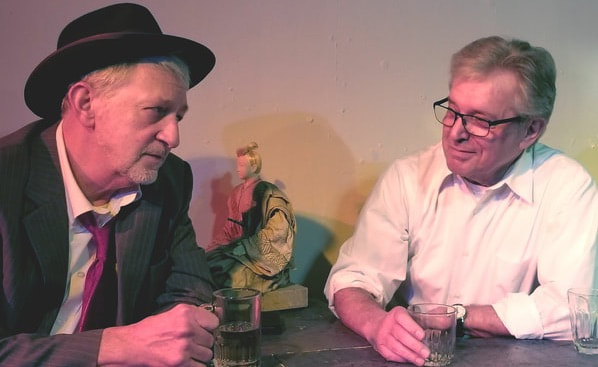
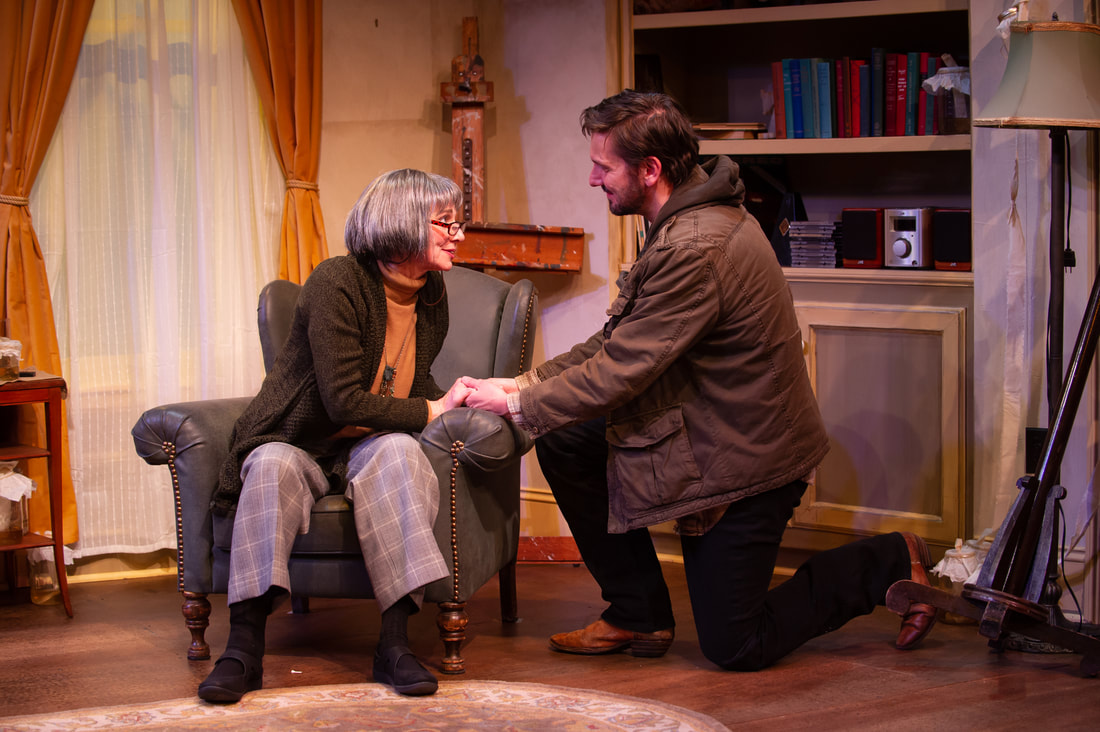

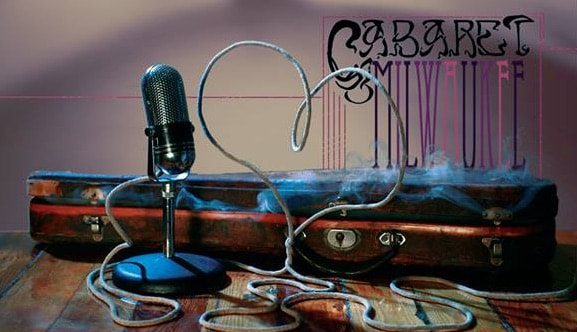
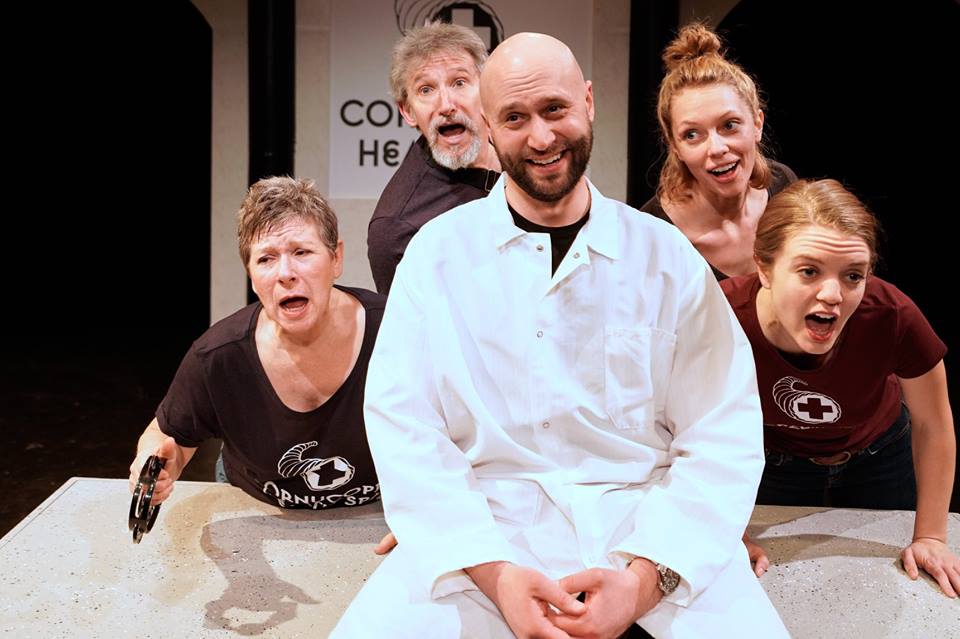
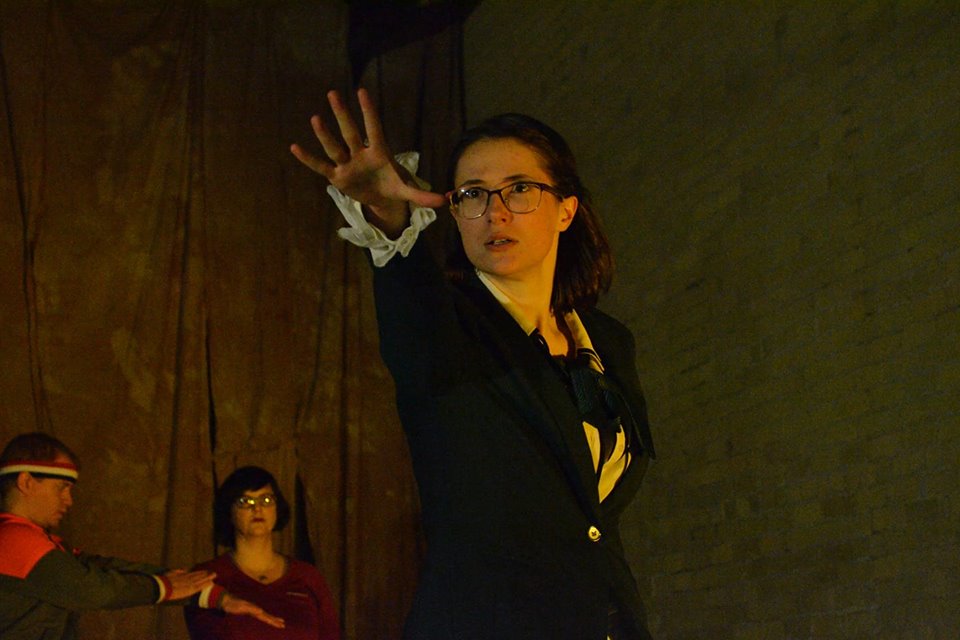

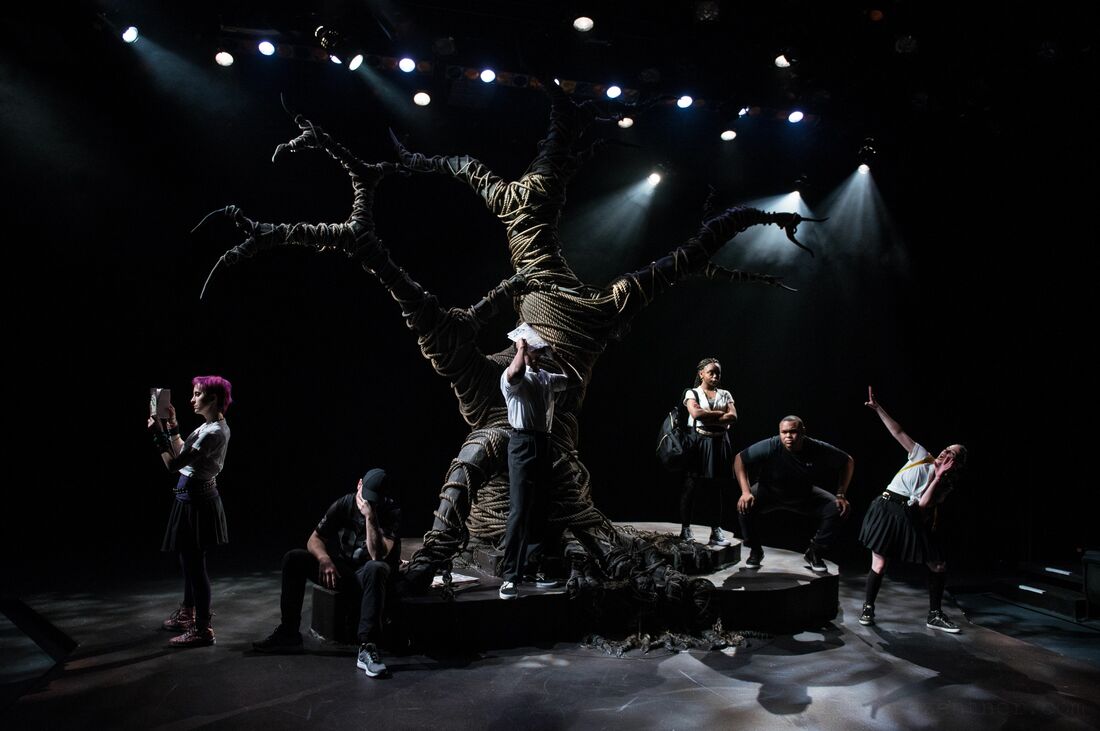
 RSS Feed
RSS Feed
